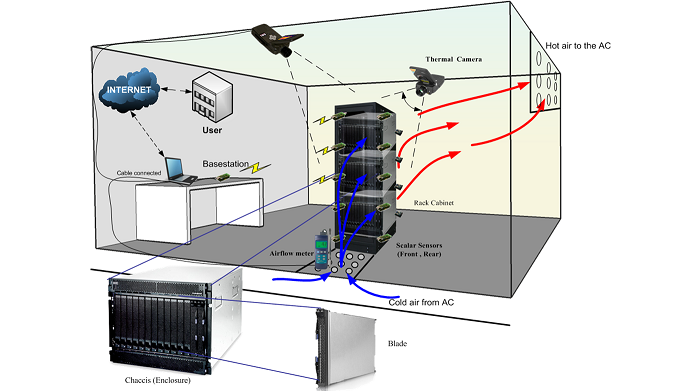Temperature and Heat Profiling in Green Datacenters

Due to the increasing demands for computing and storage, energy consumption, heat generation, and cooling requirements have become critical concerns in datacenters both in terms of the growing operating costs (power and cooling) as well as their environmental and societal impacts. Many current datacenters are not following a sustainable model in terms of energy consumption growth as the rate at which computing resources are added exceeds the available and planned power capacities. One of the main fundamental problems in datacenters is the uneven heat generation and heat imbalances, which may lead to thermal hotspots, CPU temperature increases, and thermal fugues.
In synergy with CAC researchers, the CPS Lab is developing and validating information fusion algorithms on a wireless infrastructure for temperature and heat profiling in datacenters (Figure 3). This sensing infrastructure is composed of low-power sensors (collecting temperature, humidity, airflow velocity) and infrared cameras (collecting thermal images). The intelligent system, which will leverage measurements collected and shared across the three CAC sites, is expected i) to collect measurable heterogeneous data, ii) to process it and generate information (e.g., the heat produced by CPUs and conducted/radiated in the datacenter as well as the location of hotspots), and iii) to acquire knowledge (e.g., the estimated heat to be extracted by the AC system and hence, the heat imbalance). With this knowledge that allows us to ‘predict’ temperature increases, we will design smart workload distribution strategies and design closed-loop proactive AC controllers to optimize i) AC compressor duty cycles (which control the temperature of cold air) and ii) fan speeds (which control the air circulation).

